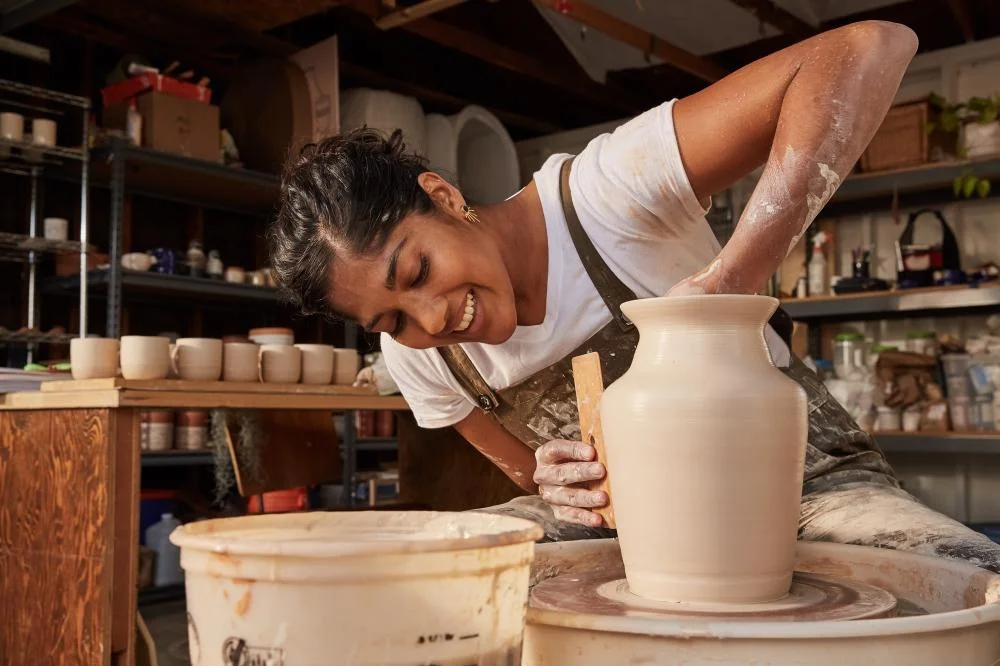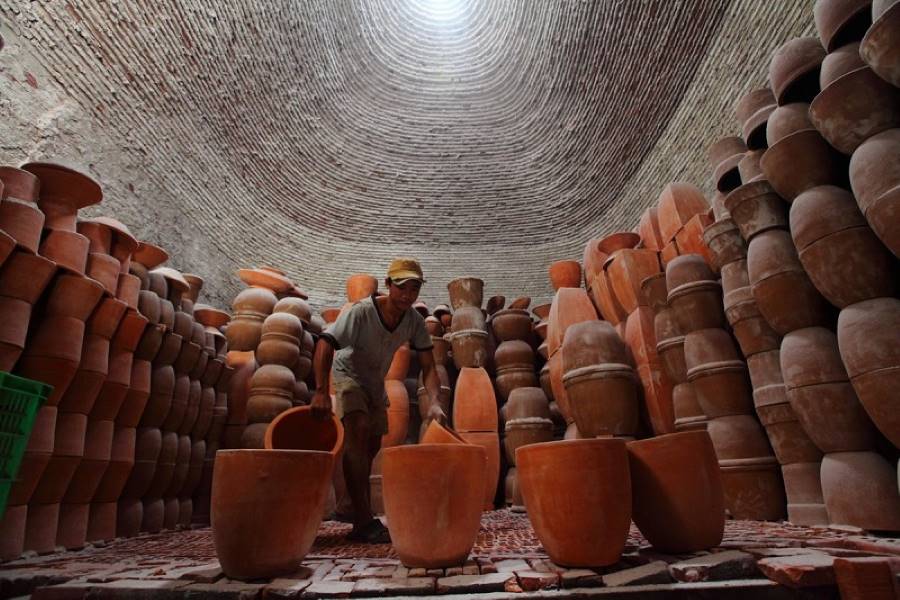Pottery is a traditional handcrafted product with a long history and significant cultural value. Pottery production process pottery requires meticulous attention to detail, patience, and high technical skills. This article will delve into the detailed process of pottery production, from selecting raw materials to finishing the product.
1. Prepare Raw Materials
1.1. Clay Mining
Clay is the primary material used in pottery production. The quality of the clay significantly affects the final product. The selected clay must be highly plastic and free from excessive impurities. High-quality clay is usually mined from specific clay deposits known for their purity and consistency. The mining process involves extracting clay from the ground, often using specialized equipment to ensure minimal contamination.
1.2. Filtering and Refining
After mining, the clay undergoes a filtering and refining process. This step is crucial to remove impurities such as stones, roots, and unwanted particles. The clay is often soaked in water to separate finer particles from larger debris. It is then sieved and allowed to settle, ensuring that only the finest clay is used. This refined clay is then left to dry to a workable consistency, ready for the next stage.
2. Kneading the Soil: Mixing and Kneading the Soil
The filtered clay is mixed and kneaded thoroughly to achieve the desired plasticity and uniformity. This process can be done manually or with the help of machinery. The goal is to remove any remaining air bubbles and ensure the clay has a consistent texture. Proper kneading is essential as it prevents defects and cracks during the shaping and firing stages. The clay is often wedged by hand, a technique where it is repeatedly cut and slammed together to achieve an even consistency.
3. Pottery Shaping


3.1. Molding and Casting
Shaping is a critical stage that determines the final form of the pottery. Artisans use various techniques, including wheel throwing and hand-building, to create different shapes. The pottery wheel allows for symmetrical and uniform shapes, while hand-building techniques, such as coiling and slab construction, enable more creative and unique forms. Molds can also be used to cast identical pieces, which is particularly useful for mass production.
3.2. Smoothing and Repairing
After the initial shaping, the pottery is smoothed and repaired to eliminate rough spots and imperfections. This process often involves using tools like rib tools, sponges, and knives to refine the surface. Artisans carefully inspect each piece, making necessary adjustments to ensure the final product meets quality standards. This stage is crucial for preparing the pottery for drying and firing, ensuring a flawless finish.
4. Drying of pottery products
4.1. Natural Drying
Once shaped and refined, the pottery is left to dry naturally. Natural drying can take anywhere from a few days to several weeks, depending on the size and thickness of the pieces. During this period, the clay loses moisture slowly, which helps prevent cracking. This is often covered with plastic sheets to control the drying rate, ensuring even moisture loss and reducing the risk of warping.
4.2. Artificial Drying
To expedite the drying process and achieve uniform dryness, pottery can be dried artificially. This involves placing the pieces in a controlled environment, such as a drying cabinet or kiln set at low temperatures. Artificial drying is carefully monitored to avoid sudden temperature changes that could damage the pottery. This method is particularly useful for larger production runs, where time efficiency is essential.
5. Pottery Firing


5.1. Kiln Stacking
Before firing, the dried pottery is meticulously stacked in the kiln. Proper stacking is vital to ensure that the pieces do not touch each other and that heat circulates evenly. Kilns can be electric, gas, or wood-fired, each offering different benefits. The stacking process requires careful planning and expertise to maximize space and prevent damage during firing.
5.2. Pottery Firing
Firing is the transformative process that turns clay into durable ceramic. The kiln is gradually heated to temperatures ranging from 800 to 1200 degrees Celsius, depending on the type of clay and the desired finish. The firing process can take several hours or a few days, with the temperature being slowly increased and then held at the peak temperature to achieve vitrification. This process hardens the clay and develops the final color and texture of the pottery. Precise temperature control is essential to avoid defects such as warping or cracking.
6. Pottery product finishing
6.1. Quality Control
After firing, each piece undergoes rigorous quality control. Artisans inspect the pottery for defects, such as cracks, discoloration, or warping. Pieces that do not meet the quality standards are discarded or repaired if possible. This step ensures that only the best products reach the consumers. Quality control also involves testing the durability of the pottery, ensuring it meets functional standards.
6.2. Painting and Decoration (if necessary)
Some pottery products may require additional painting and decoration to enhance their aesthetic appeal and value. This process includes applying glazes, painting patterns, or adding decorative elements. Glazing involves coating the pottery with a liquid glaze that, when fired, forms a glass-like surface, adding both beauty and functionality by making the pottery waterproof and more durable. Hand-painted designs add a unique touch, reflecting the artisan’s creativity and skill.
Conclusion
The pottery production process is a complex art form that combines traditional techniques with modern innovations. From selecting raw materials, kneading the soil, shaping, drying, and firing to quality control and finishing, each stage requires meticulous attention and high skills. This careful and patient process results in products that are not only functional but also embody deep cultural beauty.
Understanding this process highlights the dedication and craftsmanship involved in creating each piece of pottery. Whether used for practical purposes or as decorative art, pottery continues to be a testament to human creativity and tradition. This article aims to provide a comprehensive overview of the pottery production process, celebrating and preserving the art of traditional pottery making.
Re: Hiệp Lợi IV



